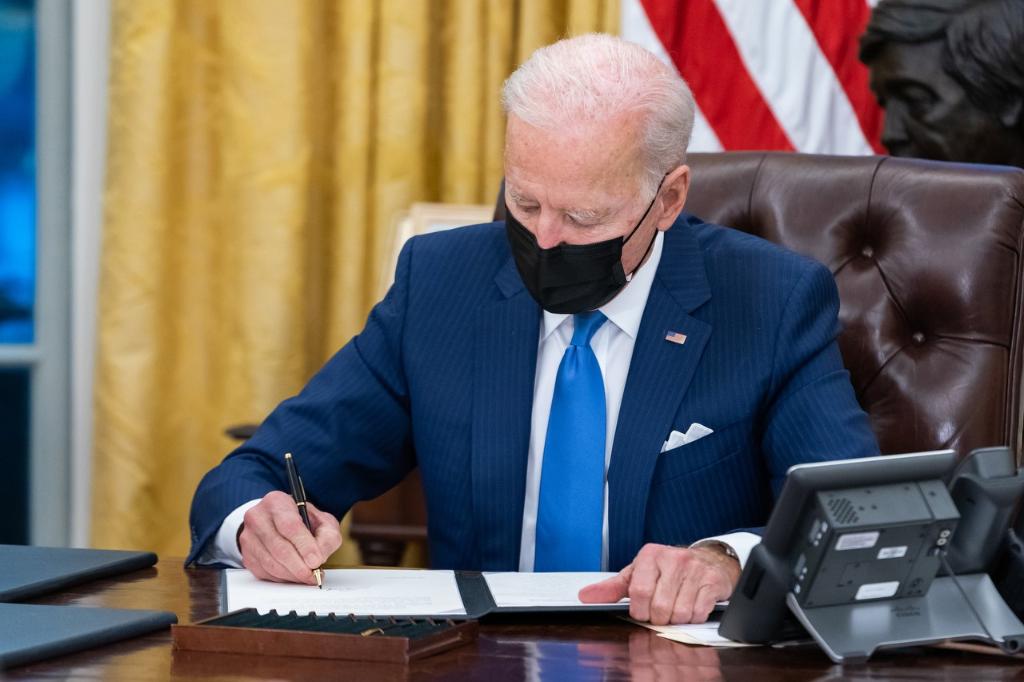Where is Biden’s plan on public works?

Facts, numbers and comments on the Biden infrastructure plan. The in-depth study by Paolo Raimondi and Mario Lettieri
When the electoral campaigns of the parties are intertwined with political and economic choices, the results are not always positive, everywhere in the world. Also in Italy and the United States.
For example, President Biden's infrastructure investment program was effectively halved. The Republican party does not intend to allow it to become a success for the Democrats in the 2022 mid-term elections. To avoid a paralyzing filibuster in the Senate, the government has said it is willing to a bipartisan agreement for more "watered down" projects.
Biden's initial infrastructure plan was $ 1.9 trillion over eight years. It has been reduced to 1,200 billion of which, however, 650 already allocated previously by the Trump administration. The new investments, therefore, amount to 550 billion.
It seems a considerable amount. It is not, however, if it is taken into account that the majority of the infrastructures are obsolete, 40 years old or more.
The 2021 Report of the American Society of Civil Engineers (Axes), the independent organization of civil engineers, identifies in detail the areas of infrastructural development and quantifies the need for investments in 10 years at 2,590 billion dollars. At least 786 billion is needed just to modernize or repair roads and bridges. Biden now expects 110 billion.
The second area that requires major intervention concerns drinking water and related infrastructure. The ASCE estimates that the investment gap could rise to 434 billion dollars by 2029. In the administration's program, only 55 billion are foreseen. Then there are the energy sectors whose gap could be around 200 billion dollars by 2029. But only 73 are expected.
All this is not surprising: it is the consequence of the profound transformation of the USA, where in the past decades the financialization of the economy and outsourcing (the movement of industries abroad to pay less labor costs and taxes) have grown enormously, to the detriment of the productive sectors. In fact, while in 1965 the machine tool sector represented 28% of the entire world market, today this percentage is reduced to 5%. In 2018, machine tool manufacturers exported $ 4.2 billion and imported $ 8.6 billion.
If we produce less and we want to keep consumption levels high, the only way is through debt. Not only the public one of central and peripheral administrations, but also the private one. In fact, in the second quarter of 2021 the debt of American families reached almost 15 trillion dollars, of which over 10 thousand for home mortgages. In just one quarter, the increase in private debt grew by 2.1%. Household health spending has also increased enormously.
The Biden administration has a very ambitious investment program, on paper. In addition to infrastructure, there are spending packages for digital, for climate change and above all for children and schools. It is clear that doing everything in debt, issuing Treasury bonds and printing money, would not be possible. For this reason, Biden has announced a willingness to raise taxes on the profits of large corporations and the super rich. An ideological battle is also underway on this, with electoral repercussions.
On the other hand, Trump's policy of $ 1.9 trillion tax cuts did not bear much fruit. The liberal narrative argued that forgiven taxes would automatically turn into new investments in sectors of the real economy. That was not the case!
Lowering taxes for SMEs, for families and also for large, productive and innovative industries is positive. However, it is the practice of certain multinationals and some service sectors, primarily the financial ones, to use the money left in their coffers for different stock exchange operations, such as the repurchase of their shares, buyouts, that is, for the purchase of other companies. with borrowed money, or to distribute higher dividends. The opposite of what should be done, not only in the US.
This is a machine translation from Italian language of a post published on Start Magazine at the URL https://www.startmag.it/economia/a-che-punto-e-il-piano-di-biden-sulle-opere-pubbliche/ on Sun, 05 Sep 2021 06:10:58 +0000.
